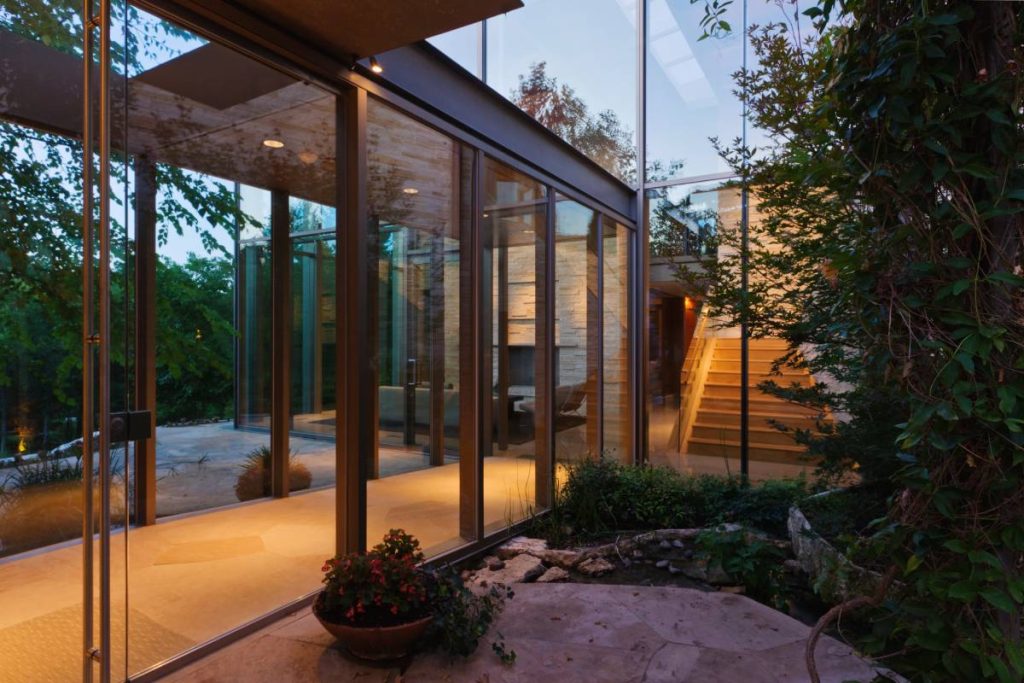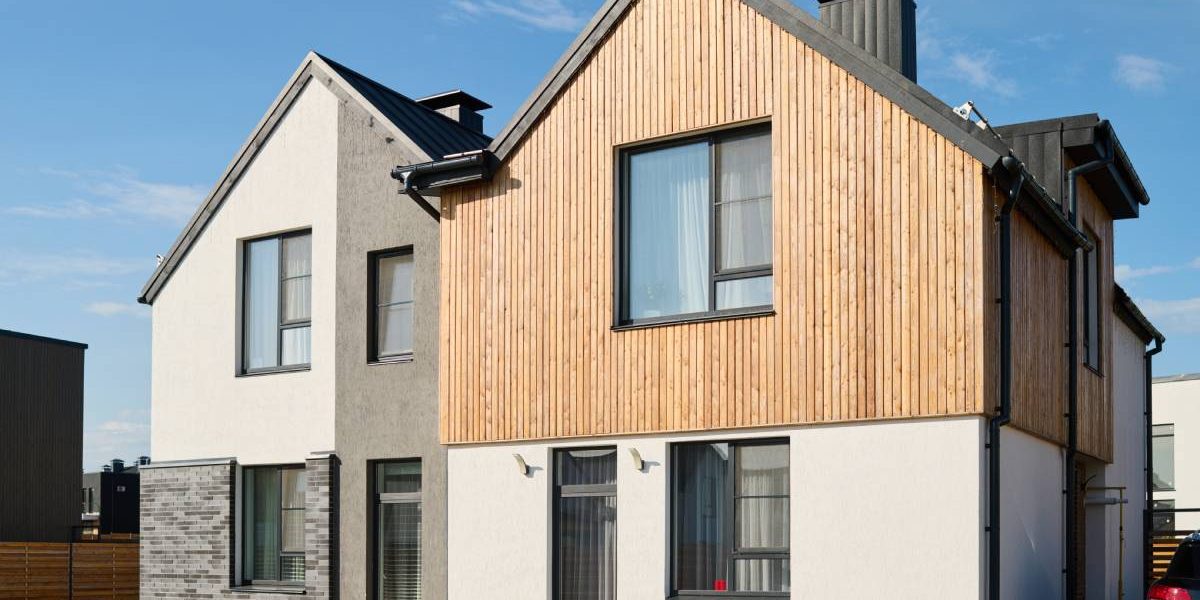The construction industry has seen significant advancements thanks to various building technologies. Building or renovating a house on a tight budget is now much simpler with the introduction of affordable options. Cladding stands out among these choices, transforming the construction landscape by offering property owners a quick and hassle-free way to enhance both the look and durability of their homes.
In this article, we delve into what cladding entails, its significance, and the different types of cladding available.
You might also read
What is cladding?
Cladding refers to the application of one material over another to provide a protective layer or aesthetic finish. In construction, it’s often used to cover the exterior of a building, providing protection against weather elements while also enhancing the building’s appearance.
Cladding materials can vary widely, including wood, metal, vinyl, brick, stone, composite materials, and more. The choice of cladding depends on factors like cost, durability, aesthetics, and maintenance requirements.

Why is cladding important?
Cladding serves several important purposes in construction:
- Weather Protection: Cladding acts as a protective barrier against weather elements such as rain, wind, snow, and UV radiation. It helps to prevent moisture infiltration into the building envelope, which can lead to structural damage and mold growth.
- Insulation: Some types of cladding provide thermal insulation, helping to regulate the temperature inside the building and improve energy efficiency. This can result in reduced heating and cooling costs.
- Aesthetic Enhancement: Cladding can significantly enhance the visual appearance of a building, contributing to its architectural style and overall design aesthetic. It allows architects and designers to achieve various looks, from traditional to contemporary, by selecting different materials, colours, and textures.
- Durability: Cladding materials are often chosen for their durability and resistance to wear and tear. They can help to prolong the lifespan of the building by protecting the underlying structure from damage and deterioration.
- Maintenance: Cladding can also reduce the maintenance requirements of a building by shielding the exterior surfaces from dirt, debris, and pollution. Many cladding materials are easy to clean and require minimal upkeep over time.
Overall, cladding plays a crucial role in both the functional and visual aspects of building construction, providing protection, insulation, and aesthetic appeal.
How many types of cladding are there?
Here are the 14 primary types of cladding commonly used today:
Brick Cladding
Brick cladding offers a charming, patterned appearance reminiscent of traditional stone. It allows for diverse designs, creating a unique and authentic look. Available in various colours, cladding bricks are lighter than building bricks. Despite being slightly more expensive to install, brick cladding is favoured for its ability to withstand extreme weather conditions. Moreover, it’s easy to maintain and long-lasting.
Wooden Cladding
Wood has become increasingly popular for both commercial and residential aesthetics due to its durability, especially when coated in paint for external use. Hardwoods like cedar are commonly used for cladding because they are resistant to termite damage. Wood is also environmentally friendly, being biodegradable and recyclable. Wood cladding not only enhances the appearance of a surface but also provides sufficient insulation to meet energy efficiency standards.
Stone Cladding
Natural stone cladding comes in a variety of colours and sizes and is predominantly used for external walls, offering both a new and authentic look as well as protection. Stone cladding is favoured for its durability and resistance to moisture absorption. Marble, sandstone, and slate are among the types of stones used. Stone cladding is easy to prepare, requiring only cutting to size. Its ability to withstand harsh weather conditions makes it a practical choice.

Glass Cladding
Glass cladding involves using glass to enhance the external appearance of buildings. Nowadays, many individuals and companies prefer glass cladding over metal or timber due to its affordability and ease of installation. It’s commonly used in commercial settings and less frequently in residential houses.
The installation process typically begins with the use of brick cladding tiles, onto which glass panes are attached. These panes are supported by upstands, ensuring they are securely held in place and protected from strong winds. The sleek finish provided by glass cladding adds a chic look to a structure, thereby increasing its value.
Aluminum Cladding
Aluminum is favoured for its durability and low maintenance requirements—it doesn’t absorb moisture and can withstand various weather conditions. When used as a cladding material, aluminium provides a glossy, modern appearance. Its malleability makes it easy to work with, and it’s also lightweight, fire-resistant, and available in a range of colours.
Scyon Cladding
Also known as fibre cement cladding, Scyon cladding is made from a combination of cement, sand, and cellulose. It’s available in vertical and horizontal boards, as well as square and rectangular panels. The thermal properties of Scyon cladding surpass those of hardwood, and it’s resistant to termite damage. These sheets can be attached to timber or steel frames for installation.
Stainless Steel Cladding
Stainless steel cladding typically contains 10% chromium, making it highly resistant to corrosion. Because it doesn’t corrode, it offers long-term protection to walls, ensuring durability over time. This type of cladding is also cost-effective, easy to install, and requires minimal maintenance.
Porcelain Tile Cladding
Porcelain tile cladding is known for its outstanding performance and durability. Suitable for both residential and commercial buildings, it comes in various colours and sizes, making it perfect for interior cladding. When used on walls, porcelain tile cladding creates a sleek and modern appearance. Its smooth texture simplifies cleaning and maintenance, while its protective properties make it resistant to external pressures and water absorption.
External Foam Cladding
External foam cladding is made from foam similar to polystyrene, reinforced with a fibreglass mesh coating and a sturdy core for impact resistance. Available in different panel sizes to accommodate various building types, it’s quick and easy to install. Resistant to termite damage and boasting excellent thermal properties, external foam cladding can withstand diverse weather conditions. Its trendy appearance makes it a popular choice for enhancing the outer walls of buildings.

Ceramic Cladding
Ceramic cladding offers a versatile and modern solution with exceptional mechanical and aesthetic properties. Available in a range of colours and textures, it creates a contemporary finish, and its diverse installation patterns allow for customizable designs. Lightweight and impermeable, ceramic cladding is easy to install and provides strong resistance to high and low temperatures. Suitable for both interior and exterior walls, it offers a smooth, sophisticated finish for both protection and aesthetic enhancement.
Metal Wire Mesh Cladding
Metal wire mesh cladding is a modern and distinctive type of cladding crafted from metal wire mesh. The mesh is available in various specifications tailored to different building types and cladding purposes. Made of steel, this cladding is durable and resistant to rust and corrosion. Its diverse weaving patterns impart a unique appearance to buildings.
Plastic Cladding
Plastic cladding, constructed from polyvinyl chloride (PVC), serves both protective and decorative functions. It’s well-suited for areas prone to dampness, such as bathrooms and storage rooms, offering affordable and easy-to-install protection. Available in a multitude of colours, plastic cladding instantly transforms rooms or buildings, enhancing their aesthetic appeal.
Curtain Cladding
Curtain cladding involves the installation of curtains on non-structural walls to create a temporary cladding solution. This method enhances the artistic ambience of a room while safeguarding interior spaces and permitting natural light. Curtain cladding comes in various colours and textures to suit different design preferences.
3D Cladding
3D cladding is a decorative option available in diverse colours, imparting surfaces with a unique three-dimensional appearance. Primarily used for aesthetic purposes, this cladding is lightweight, affordable, and easy to install and maintain. It’s suitable for both quick renovations and new construction projects.
Conclusion
When selecting cladding for your home, consider how you want the exterior to appear, its performance, and the material quality. Opt for the cladding type that aligns with your budget and specific needs. It’s essential to seek professional guidance before making your final decision or installing the cladding.











